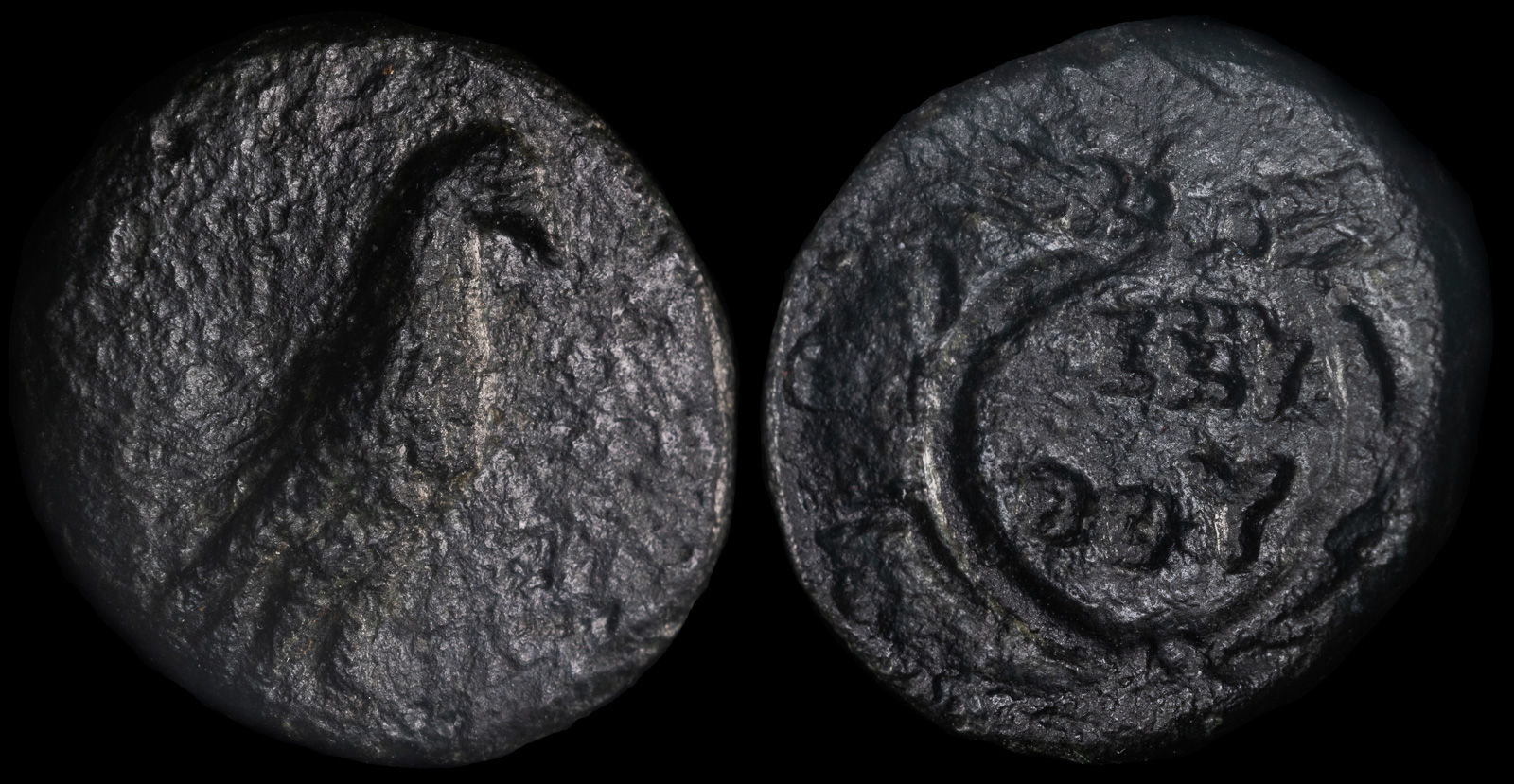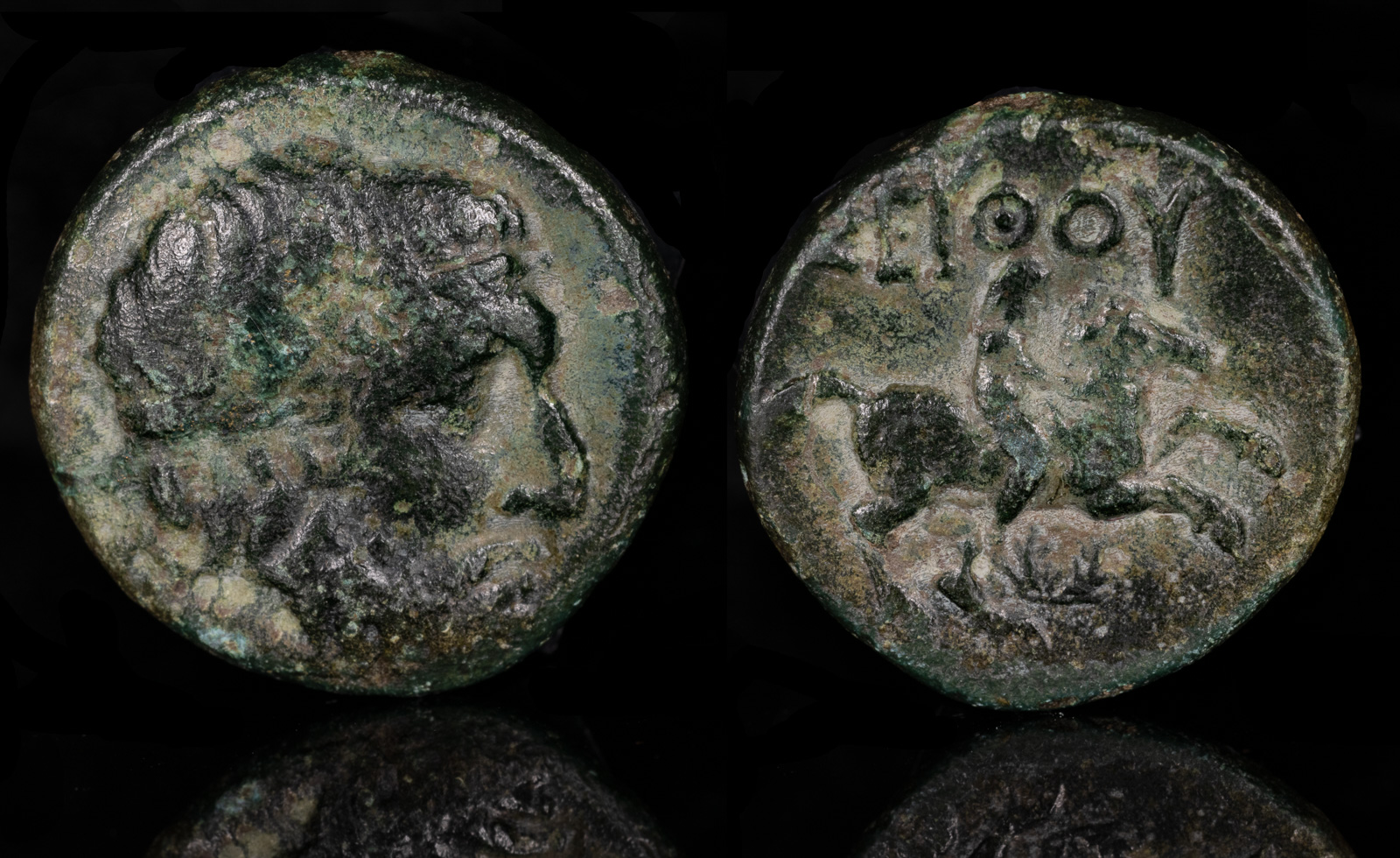
Kings of Thrace, Seuthes III
Circa 323-316 BCE
Ae 15mm, 2.4gms
Obv: Eagle standing right
Rev: King’s name in two lines within wreath of grain ears
Peykov B3840; SNG Stancomb 292
One fascinating aspect of Seuthes III, which few other rulers here except Philip II can boast, is that his tomb has been found. One can visit it today in Bulgaria and see his original sword and a freaky bronze head of him that strongly resembles that on his coins.
Seuthes was a major thorn in the side of Lysimachos during much of the latter’s reign. They fought against each other multiple times. The first, soon after Lysimachos took over his then satrapy after the death of Alexander, resulted in roughly a draw. The second occurred much later and resulted in a Lysimachos victory, but he was unable to take advantage of it due to an assault by Antigonos I Monophthalmos.
Although Seuthes may have had to pay tribute to Lysimachos, he remained in power after Lysimachos‘ death. There’s some evidence that he was still in power even at the death of Kassander. During this time, he founded his own city that he conveniently named Seuthopolis (naming your own cities was all the rage back then), and arranged for his impressive burial mound.
That in itself should stand for something. Of all his contemporaries, he left the most evidence for us.

Seuthes III
Seuthopolis
AE 19 mm, 6.04 g
Diademed and bearded male head to right.
Rev. ΣEYΘOY Horseman riding horse galloping to right; below horse, wreath.
Dimitrov 9. HGC 3, 1713. SNG Copenhagen 1072. Topalov 122
Seuthes III revolts against Alexander III after his governor of Macedon, Zopyrion, is killed against the Getai.
Seuthopolis is founded by Seuthes III.
Lysimachos and Seuthes III fight to a draw and it appears make peace.
Seuthes III constructs Seuthopolis.
Seuthes III supports the revolt of Kallatis against Lysimachos but is defeated.
Lysimachos subdues Kallatis and reaches a peace with Seuthes III.